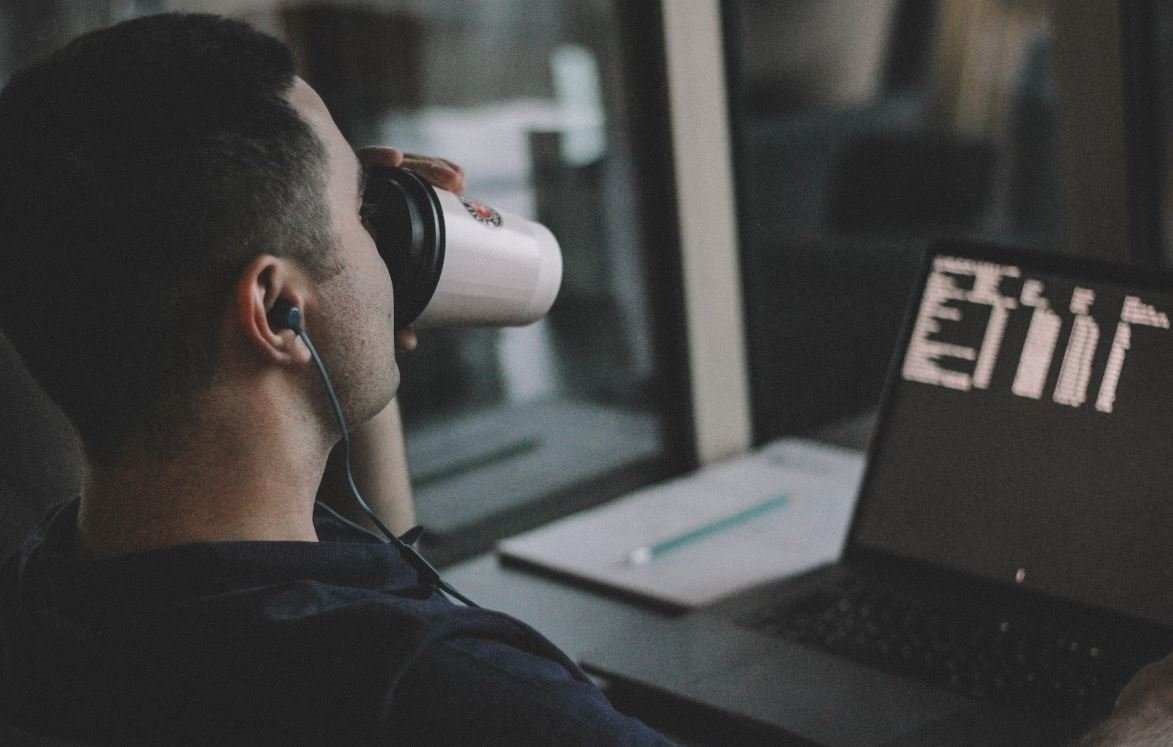AI Deepfake Video Software
Deepfake technology, powered by artificial intelligence (AI), has recently gained significant attention for its ability to generate highly realistic fake videos by swapping faces and manipulating speech. This AI-driven software utilizes sophisticated algorithms to overlay one person’s face onto another’s, creating a new video that can be indistinguishable from reality. Deepfake videos have raised concerns about their potential to spread misinformation and be used for malicious purposes.
Key Takeaways
- Deepfake technology is powered by artificial intelligence and creates realistic fake videos by manipulating faces and speech.
- It can be hard to distinguish between deepfake videos and real videos, making it a potential tool for spreading misinformation.
- Deepfake technology has ethical and legal implications, including privacy concerns and the potential for misuse.
Implications of AI Deepfake Video Software
**Deepfake software**, with its ability to create convincing fake videos, poses several significant implications:
- **Misinformation**: Deepfakes can be used to spread false information, creating a challenge for ensuring the credibility of online content. They can potentially be weaponized to manipulate public opinion and even influence elections.
- **Privacy Concerns**: Deepfake videos raise serious privacy concerns as anyone can have their face superimposed on someone else’s body without their consent. This poses risks of harassment, blackmail, and reputation damage.
- **Authenticity**: The proliferation of deepfakes undermines the trust in visual media, making it increasingly difficult to discern real videos from fake ones. This can have severe social and political consequences.
- **Legal Issues**: Deepfake videos blur the line between freedom of expression and defamation, putting forth challenges for lawmakers in implementing appropriate regulations that balance protection and restriction.
Impact on Society
**The rise of deepfake videos** has the potential to impact various aspects of society:
- **Politics and Journalism**: The increased use of deepfakes in politics and journalism can sow confusion and distrust, undermining the democratic process and the credibility of news sources.
- **Entertainment Industry**: Deepfake technology is being used in the entertainment industry to create realistic scenes with deceased actors or to replicate performances, presenting both creative opportunities and ethical concerns.
- **Security and Law Enforcement**: Deepfakes can pose challenges for security agencies and law enforcement in verifying evidence, conducting investigations, and ensuring the integrity of legal proceedings.
Table: Examples of Deepfake Video Software
| Software | Description |
|---|---|
| DeepFaceLab | A popular open-source deepfake software with advanced face swapping and video editing capabilities. |
| FaceSwap | An open-source software that allows users to swap faces in videos and photos with relatively user-friendly features. |
Combating Deepfake Videos
**Despite the challenges**, there are efforts to combat the impact of deepfake videos:
- **Detection Algorithms**: Researchers are developing sophisticated algorithms to detect deepfake videos and distinguish them from real ones.
- **Public Awareness**: Raising awareness about deepfake technology can help individuals become more skeptical of the videos they encounter, promoting a critical approach to visual media.
- **Regulatory Measures**: Governments and tech companies are exploring laws, regulations, and partnerships to address deepfake-related challenges and protect users from the potential harm caused by misleading videos.
Table: Deepfake Detection Tools
| Tool | Features |
|---|---|
| Deeptrace | Uses AI to analyze videos and identify potential deepfakes through pixel-level analysis. |
| Truepic | Uses blockchain technology to certify genuine photos and videos, helping prevent the spread of deepfakes. |
The Future of Deepfake Technology
*While deepfake videos present significant challenges and potential risks, they also have the potential for positive applications in areas such as entertainment and virtual reality.*
- Advancements in deepfake detection technology can help minimize the negative impact of deepfakes on society.
- Stricter regulations and legal frameworks can provide a means to address the ethical and privacy concerns associated with the use of deepfakes.
- Increased public education and media literacy can empower individuals to critically analyze and question the authenticity of videos.

Common Misconceptions
AI Deepfake Video Software
Paragraph 1:
One common misconception people have about AI deepfake video software is that it can easily create flawless and undetectable fake videos. While the technology has advanced significantly in recent years, it still has limitations and can be identified with proper analysis.
- Deepfakes often exhibit subtle flaws or artifacts that can be detected upon close examination.
- High-quality deepfakes require a significant amount of training data and computing power.
- There are techniques and tools being developed to detect and counter deepfakes.
Paragraph 2:
Another misconception is that AI deepfake video software can only be used for malicious purposes, such as creating fake news or spreading disinformation. While there have been notable cases of misuse, deepfake technology also has various positive applications, such as entertainment, digital effects in movies, and even assisting with research and simulations.
- Deepfakes can be used in the film industry to digitally recreate actors or add visual effects.
- They can assist in medical research and training by simulating different scenarios or diseases.
- Deepfake technology can have creative and artistic uses in music videos or virtual performances.
Paragraph 3:
There is a misconception that anyone can easily create convincing deepfake videos without technical knowledge or expertise. While there are user-friendly tools available, creating high-quality deepfakes usually requires substantial technical skills and knowledge of machine learning algorithms.
- To create convincing deepfakes, one needs to understand concepts like neural networks and image processing.
- Training deepfake models requires expertise in data preparation, analytics, and computational resources.
- The process involves multiple complex steps, including data collection, model training, and video editing.
Paragraph 4:
People often assume that AI deepfake video software can manipulate any video content, regardless of its source or quality. However, the quality of the source material greatly impacts the result of a deepfake video. Low-resolution or poorly-lit videos can limit the accuracy and realism of the generated deepfake.
- High-quality source videos with consistent lighting and angles yield better deepfake results.
- Capturing high-resolution input video footage is crucial for better manipulation results.
- Poor-quality source material can lead to unrealistic and easily detectable deepfakes.
Paragraph 5:
Lastly, there is a misconception that the only way to counter deepfake videos is through advanced AI detection methods. While AI detection techniques are essential in the fight against deepfakes, traditional media literacy, critical thinking, and human verification play a significant role in identifying and debunking misinformation.
- Education and raising awareness about deepfakes can help people become more cautious consumers of media.
- Encouraging media platforms to implement fact-checking measures can help combat the spread of deepfake videos.
- Human expertise and intuition are valuable in detecting inconsistencies or anomalies in deepfake content.

Understanding Deepfake Videos
Deepfake videos are a form of artificial intelligence (AI) technology that uses deep learning algorithms to manipulate or create realistic videos. This technology has raised concerns about its potential misuse, as it can be used to deceive viewers by creating fake videos that appear genuine. The following tables provide insight into various aspects of AI deepfake video software and its impact on different industries.
1. Deepfake Video Detection Tools
This table highlights different deepfake video detection tools available in the market. These software tools employ various techniques such as facial recognition, machine learning, and image analysis to identify manipulated videos.
| Detection Tool | Features | Compatibility |
|————————|—————————————————|———————|
| Deeptrace | AI-based platform for deepfake detection | Web-based |
| Amber Authenticate | Uses mini video fingerprints to spot deepfakes | Windows, macOS |
| Truepic Foresight API | Offers deepfake detection and image verification | Web-based |
| Deepware Scanner | Detects deepfake videos through facial analysis | Windows, macOS |
2. Deepfake Videos in Politics
This table explores examples of deepfake videos used for political purposes, often to influence public opinion or smear individuals.
| Deepfake Video Example | Impacted Figure | Political Objective |
|———————————————-|———————————-|—————————————————|
| “Obama PSA” | Barack Obama | To raise awareness of deepfake technology |
| “Pelosi Slurring Speech” | Nancy Pelosi | To discredit and damage political reputation |
| “Boris Johnson Endorses Opponent” | Boris Johnson | To create confusion and erode public trust |
| “Deepfake Putin” | Vladimir Putin | To prompt international controversy |
3. Deepfakes in Entertainment Industry
This table presents instances where deepfake technology has been utilized in the entertainment industry for various purposes.
| Deepfake Application | Celebrity Involvement | Purpose |
|————————————-|——————————|——————————————————-|
| Replacing Actors in Films | Tom Cruise | To reduce production costs and alter casting choices |
| Additional Scenes in Classic Movies | Audrey Hepburn | To revive deceased celebrities in new contexts |
| Cameos in Music Videos | Elvis Presley | To surprise and delight fans through virtual presence |
4. Deepfake Impersonations
This table showcases famous cases where individuals have been impersonated using deepfake videos.
| Impersonated Figure | Notable Deepfake Videos | Consequences |
|———————————|——————————————————|——————————————–|
| Mark Zuckerberg | “Facebook Censorship Confession” | Misleading public perception |
| Elon Musk | “Secret Alien Alliance Exposed” | Manipulation of public opinion |
| Taylor Swift | “Taylor’s Political Rant” | Division among fanbase, controversy |
5. Risk of Deepfakes in Journalism
This table sheds light on the potential challenges and risks posed by deepfake videos in the field of journalism.
| Risk Factor | Impact | Preventive Measures |
|——————————-|———————————————–|————————————————-|
| Fake News Amplification | Misinformation dissemination and propagation | Verification of video sources, fact-checking |
| Journalism Ethics | Compromised credibility and trustworthiness | Employing forensic analysis and expert opinions |
| Reputational Damage | Portraying individuals in false contexts | Minimize reliance on video evidence alone |
6. Deepfake’s Impact on Criminal Justice
This table explores the implications of deepfake technology on criminal justice systems, including potential challenges and how it can be used for good.
| Implication | Impact | Positive Usage |
|——————————|———————————————–|————————————————-|
| Witness Tampering | Undermining testimonies and evidence | Analyzing footage for inconsistencies |
| False Confessions | Eroding the reliability of confessions | Evaluating confession videos for manipulation |
| Video Evidence Manipulation | Creating false narratives and alibis | Utilizing forensic analysis techniques |
7. Mitigating Deepfake Risks in Corporate World
This table highlights possible risks of deepfake videos and corresponding preventive measures that corporations can adopt.
| Risk | Impact | Preventive Measures |
|——————————–|———————————————–|————————————————-|
| CEO Impersonation | Fraudulent activities and reputation damage | Multi-factor authentication for sensitive tasks |
| Proprietary Information Theft | Leak of confidential data and trade secrets | Robust cybersecurity measures, encryption |
| Identity Theft | Unauthorized access and fraud | Employee education and awareness programs |
8. Deepfake’s Influence on Social Media
This table examines the effects of deepfake videos on social media platforms and their potential consequences.
| Platform | Policies and Countermeasures | Initiatives |
|—————–|—————————————————————————|———————————————————————————————|
| Facebook | Collaborating with fact-checking organizations and implementing AI algorithms | Investigating deepfake impacts on elections and strengthening platform integrity |
| Twitter | Extending manipulated media policy, labeling and removing deepfake content | Launching open-source deepfake detection challenges to support research and development |
| YouTube | Expanding policy to ban deepfake videos, investing in content moderation | Partnering with Jigsaw to establish the “Deepfake Detection Challenge” |
9. Deepfake Videos in Artistic Expression
This table explores instances where deepfake technology has been utilized for artistic purposes, encompassing various art forms.
| Artistic Genre | Notable Artists | Purpose |
|———————|———————————————————–|——————————————————-|
| Music | David Bowie, Tupac Shakur | To showcase virtual performances and collaborations |
| Visual Arts | Salvador Dali, Pablo Picasso | To create surreal and imagined self-portraits |
| Literature | F. Scott Fitzgerald, Jane Austen | To generate new works by deceased authors |
10. Regulatory Efforts against Deepfakes
This table sheds light on global efforts by governments and organizations to regulate and counteract the negative impact of deepfake videos.
| Country/Entity | Regulatory Actions | Notable Initiatives |
|——————————–|——————————————————————————————————-|———————————-|
| European Union | Introducing legislation for stricter content moderation and deepfake identification | DAPAI Project |
| United States | Proposing laws to address deepfake dissemination, harm, and authentication | DARPA’s Media Forensics Program |
| World Economic Forum | Initiating global discussions on deepfake prevention, detection, and ethical implications | Partnership for Good AI |
In conclusion, AI deepfake video software has raised concerns due to its potential to deceive and manipulate viewers. This article has explored various aspects of deepfake videos, including detection tools, their impact on politics, entertainment, journalism, criminal justice, corporate world, social media, artistic expression, and global efforts to regulate them. As deepfake technology continues to evolve, it is crucial to develop robust detection mechanisms and educate individuals about its risks to ensure a more informed and discerning public.
Frequently Asked Questions
What is AI Deepfake Video Software?
AI Deepfake Video Software is a computer program that utilizes artificial intelligence algorithms to create realistic and convincing fake videos by replacing or superimposing someone’s face onto another person’s body or altering their appearance.
How does AI Deepfake Video Software work?
AI Deepfake Video Software uses deep learning techniques such as neural networks to analyze existing videos and images of a target person. By learning the facial features, expressions, and movements, the software can generate new video footage where the target person’s face is integrated seamlessly into different scenarios.
What are the potential applications of AI Deepfake Video Software?
AI Deepfake Video Software can be used in various fields, including entertainment, filmmaking, visual effects, and digital art. It can also have potential applications in research and development, training simulations, and virtual reality experiences.
Is AI Deepfake Video Software legal?
The legality of AI Deepfake Video Software depends on its specific use. While using this software for harmless purposes like entertainment or creative endeavors may be legal in many jurisdictions, using it for malicious intents such as spreading false information, defaming someone, or violating individual privacy might be illegal in certain contexts.
How can AI Deepfake Video Software be detected?
Detecting AI Deepfake Video Software can be challenging because of its advanced algorithms. However, there are emerging techniques and technologies, such as forensic analysis and deepfake detection tools, that can help identify manipulated videos by analyzing various visual and audio artifacts.
Can AI Deepfake Video Software be used for harmful purposes?
Unfortunately, AI Deepfake Video Software can be misused to create malicious content with the potential to harm individuals, manipulate public opinion, or spread misinformation. This highlights the importance of raising awareness about deepfakes and developing robust countermeasures to combat their negative impacts.
What are the ethical concerns surrounding AI Deepfake Video Software?
AI Deepfake Video Software raises significant ethical concerns, particularly related to privacy, consent, and the potential for misuse. It can be used to deceive, exploit, or manipulate individuals, and may have serious implications for reputation management, trust, and the erosion of truth in media.
How can users protect themselves from AI Deepfake Video Software?
Users can protect themselves from AI Deepfake Video Software by being vigilant about the sources and authenticity of videos they encounter, cross-verifying information, and relying on trusted platforms for news and information. It is also essential to stay updated on the latest technologies and defense mechanisms against deepfakes.
Are there any regulations in place to address AI Deepfake Video Software?
At present, regulations specifically targeting AI Deepfake Video Software may vary across jurisdictions. However, some countries have started exploring legal frameworks and initiatives to address the potential harms of deepfakes, such as privacy regulations, defamation laws, or regulations focused on the disclosure of manipulated media.
What is being done to combat the negative effects of AI Deepfake Video Software?
Efforts are underway to combat the negative effects of AI Deepfake Video Software. Researchers are developing advanced detection methods, tech companies are investing in deepfake recognition tools, and organizations are promoting media literacy and education initiatives to raise awareness and empower individuals to discern between real and manipulated content.




